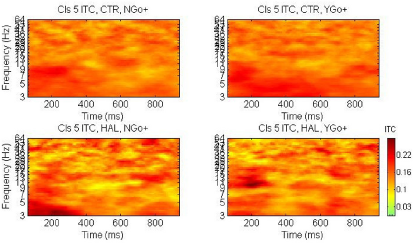No CrossRef data available.
Article contents
EPA-1383 – Neurophysiological Markers of Sound Thinking: A Single-case Study
Published online by Cambridge University Press: 15 April 2020
Abstract
Auditory hallucinations are core symptoms of the schizophrenic psychosis, but in some subjects thought process is associated to voice hearing, without the presence of other psychotic-like symptoms. These individuals have the perception of their-own thought as an inner voice.
In the last years, research has provided evidences about neurophysiological correlates of hallucinations, which include alterations in Mismatch negativity, just after the N100, and in P300 (especially the P3a component). However, no study explored subjects with sound thinking.
This paper reports a single-case neurophysiological study performed with a 29 year-old woman, reporting sound thinking and past drug abuse, who came to clinical attention for an anxiety disorder.
Patient's EEG data were compared with EEG data of two control subjects. Electrophysiological data were collected by means of an high-density EEG (Geodesic NetStation), during an active stimulation by Oddball and Go-NoGo Paradigm. EEG data were processed through the EEGLab package for Matlab. An Independent Component Analysis was performed followed by Clusters analysis.
One of the 5 Clusters extracted aggregated two ICs, produced in the scalp central areas, present both in control subjects and in the sound thinking subject: in the last one, the Intertrial Coherence, expecially at Theta frequency band, was much less evident and the P300 appears to be less wide relative to healthy controls.
These results are in line with those found in patients with hallucinations, suggesting the presence of a reduced ability to reorganize the cortical activity in response to external stimuli.

- Type
- EPW31 - Schizophrenia 3
- Information
- Copyright
- Copyright © European Psychiatric Association 2014





Comments
No Comments have been published for this article.